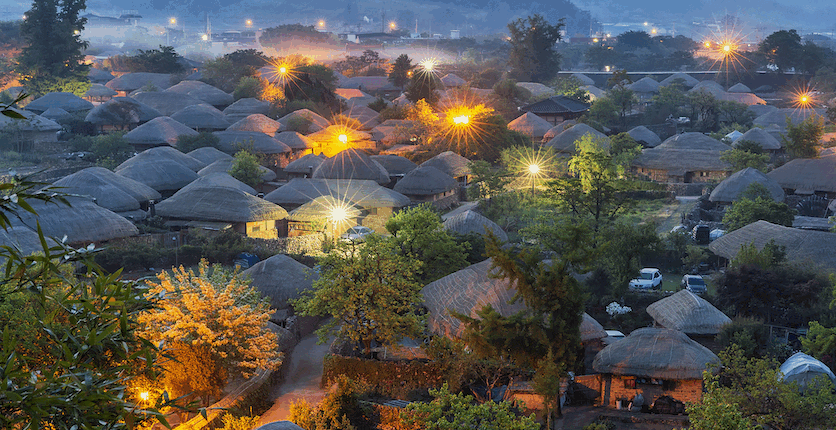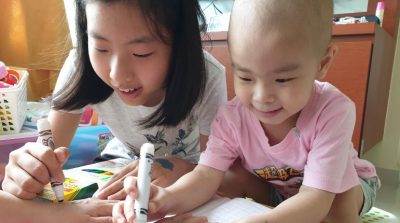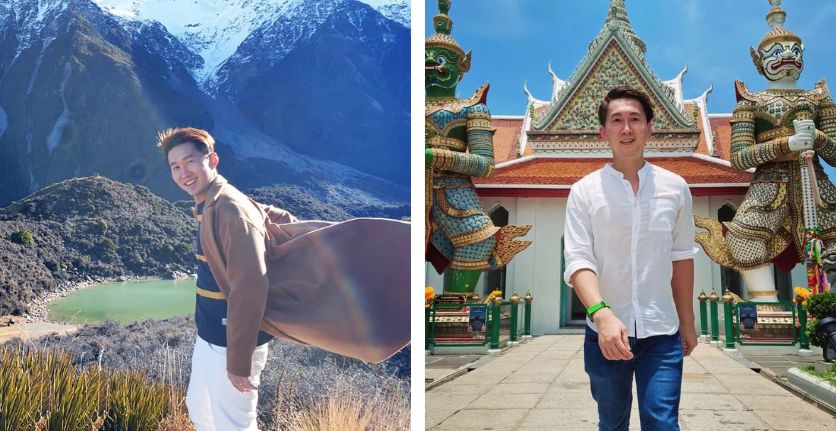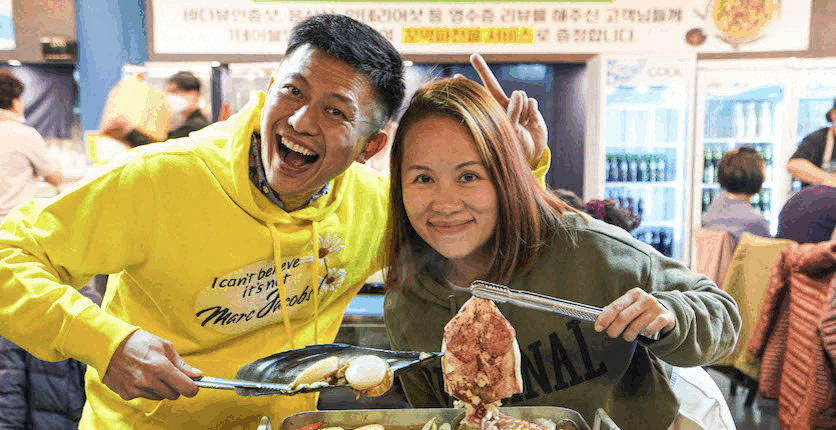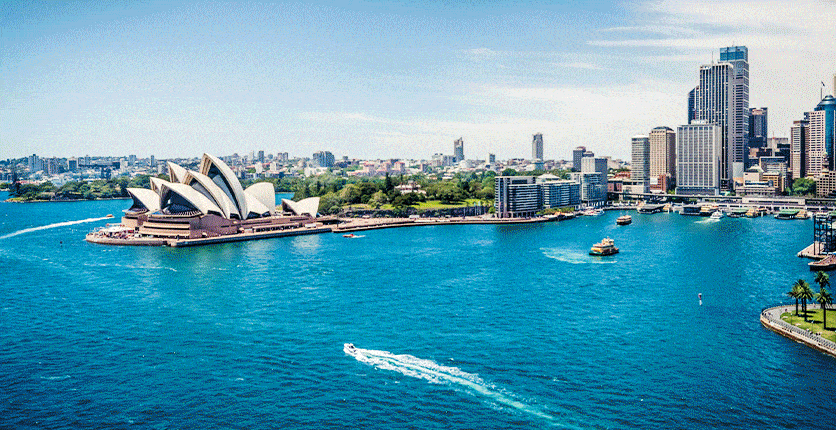Located in the southwestern part of Korea just south of Seoul, Jeollanam-do is a magical province boasting a long and rich cultural heritage, as well as scenic natural beauty and a host of tourist attractions. The province is considered to be a treasure trove of Korean folk customs due to its bountiful cultural delights. To the Koreans, it is also a celebrated “Food Paradise”, thanks to the many kinds of traditional Korean cuisines that have their origins here.
In the first part of this story, we explored Jeollanam-do’s Sinan County, Mokpo, Haenam County and Gangjin County. There’s much more to discover – Jeollanam-do also features locations with traditional and modern art, K-drama filming locations and breathtaking scenes of nature. Let’s see what Gwangju, Yeosu and Suncheon have to offer.
Gwangju
A building suffused with history
From the outside, the Jeonil Building 245 looks just like any other building. However, traces of the May 18 Democratic Uprising can still be found here. During the uprising, helicopters belonging to the authoritarian military government strafed the building and covered it with 245 bullet holes, thus giving the building its present name.
The building went through a complete renovation after the incident, and was opened to the public again in 2020, having been transformed into a multifunctional cultural centre. Visitors are now able to view exhibits such as an art installation that resembles bullets flying in their direction, glass windows covered in bullet holes, as well as miniature models and video media that recreate the uprising.
Jeonil Building 245, 245 Geumnam-ro, Dong-gu, Gwangju
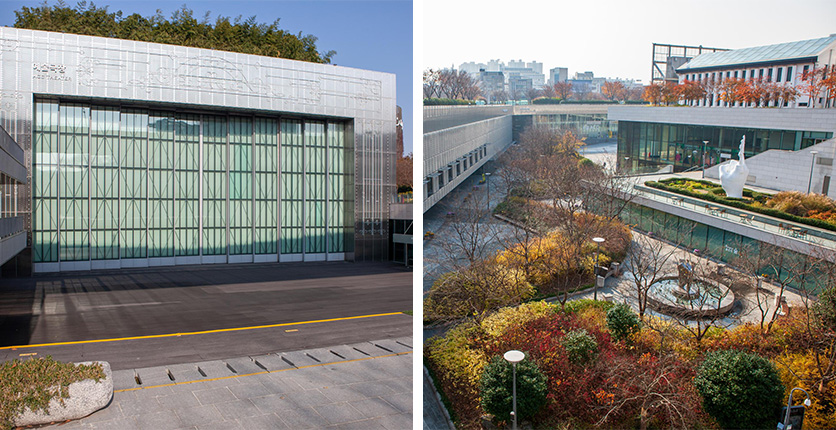
Halls of culture devoted to Asian arts
The Asia Culture Center opposite the Jeonil Building 245 is an art complex built specially for themed Asian cultural activities such as exhibitions and performances.
It houses all kinds of cultural facilities including the Democracy and Peace Culture Exchange Institute, Cultural Information Institute, Culture Creation Institute, Children Culture Institute, Arts Theatre and Asia Creation Lab. Visitors would be able to freely immerse themselves in the unique cultural atmosphere of various Asian countries here.
Asia Culture Center, 38 Munhwajeondang-ro, Dong-gu, Gwangju 61485
Stroll around the Penguin Village and marvel at wall art
The Penguin Village was once old and dilapidated. The elderly living here suffered from knee pain and walked around like they had a limp, causing them to move like waddling penguins, thus giving the village its present name.
Many houses in the village were abandoned, but after the restructuring efforts of the villagers, they have since become exhibition areas that are open to the public. The villagers displayed and hung their artworks on the walls outside. Many of these wall paintings feature penguins as the main character.
Penguin Village, 7, Cheonbyeonjwa-ro, 446beon-gil, Nam-gu
Yeosu
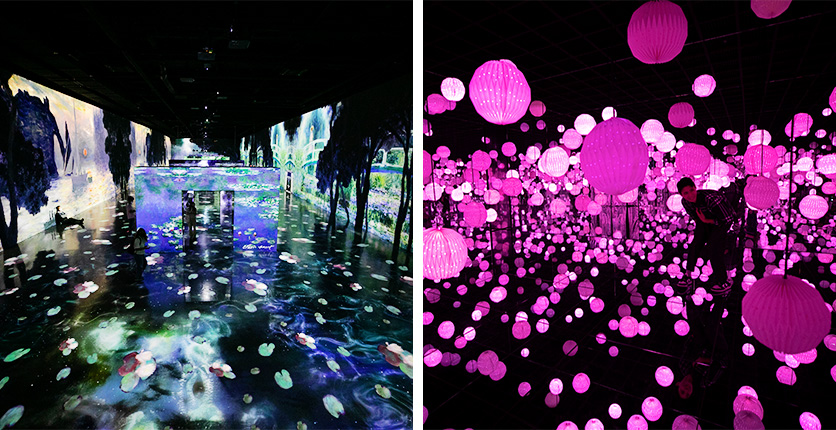
An immersive experience traversing through time and space
The ARTE Museum Ocean boasts a total area of 5,000 sq m. With the ocean as its overall theme, the interactive museum merges light and sound to create dreamily beautiful and immersive new media artworks. Visitors are able to freely move through different areas such as Flower, Beach, Waterfall, Wave, Star, Moon, Jungle and Wormhole, immersing themselves in varying experiences, as if they are traversing through time and space.
ARTE Museum, Exposition-gil 1, Yeosu-si, Jeollanam-do
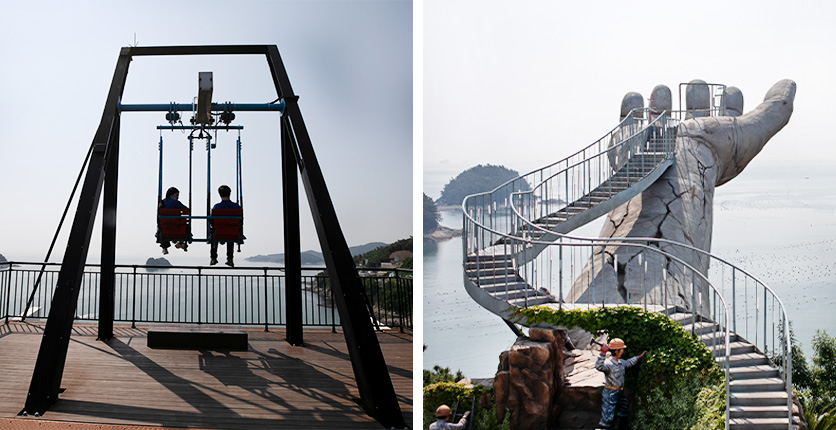
A massive hand that turns rock into gold
The Yeosu Art Land on the Yeosu seaside has everyone talking about its viewing platform in the shape of a gigantic hand sculpture, built just next to the sea, aptly named Midas’ Hand.
Apart from the impressive Midas’ Hand, there are two other breathtaking fixtures in the Art Land: Seaside Swing and Skywalk. The Seaside Swing is especially electrifying as it is built at an elevation of 100m on a sea-facing cliff. Every time you swing high up into the sky, it is as if you are flying away from the sea’s centre, ensuring a thrilling and unforgettable experience.
Yeosu Art Land, Musulmok-gil 142-1, Dolsan-eup, Yeosu-si, Jeollanam-do
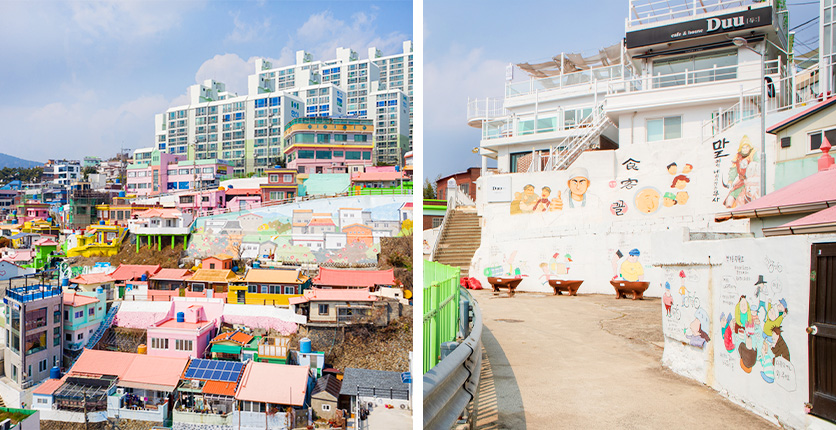
The mural alley that became a tourist hotspot
Visitors to Yeosu must not miss the 1,004 Mural Village located in Gosongdong. Comprising a 1,004m-long alley, the village was decorated with murals by the local residents in 2009 in an attempt to liven up the community. As a result, it became popular with tourists. It is also known as “Angel Street” as “1004” and “Angel” sound similar in the Korean language.
Gosongdong 1004 Mural Village, 427-1 Goso-dong, Yeosu, Jeollanam-do
Suncheon
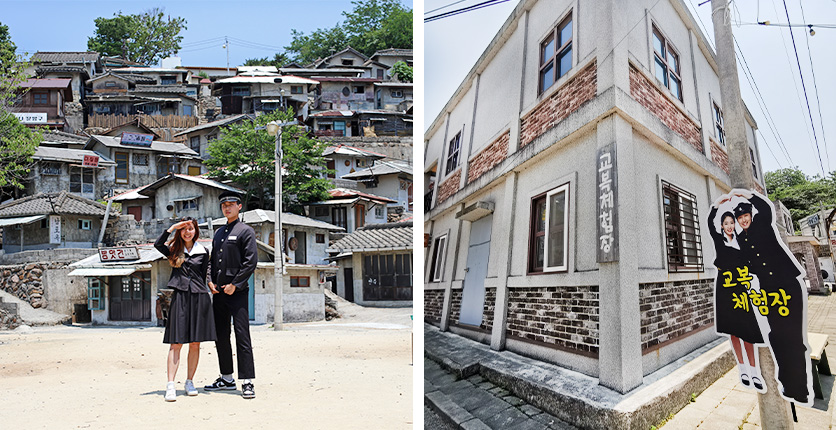
Visit a K-drama filming location
Fans of Korean drama would definitely have to visit the Suncheon Drama Filming Site when they are in Suncheon! Formerly a military site, it was remodelled to become an open-plan film set. Many popular K-dramas like East of Eden, Love Rain and the recent Pachinko were filmed here. The huge filming site convincingly recreates the houses, shops and streets of Suncheon from the 1950s to the 80s, including the slums in Seoul, the central theatre, the first brewery and the fire station from the 60s and 70s. Strolling among these places makes one feel as if they are travelling back in time to bygone eras.
Suncheon Drama Filming Site, 24, Byeonggol-gil, Suncheon-si, Jeollanam-do
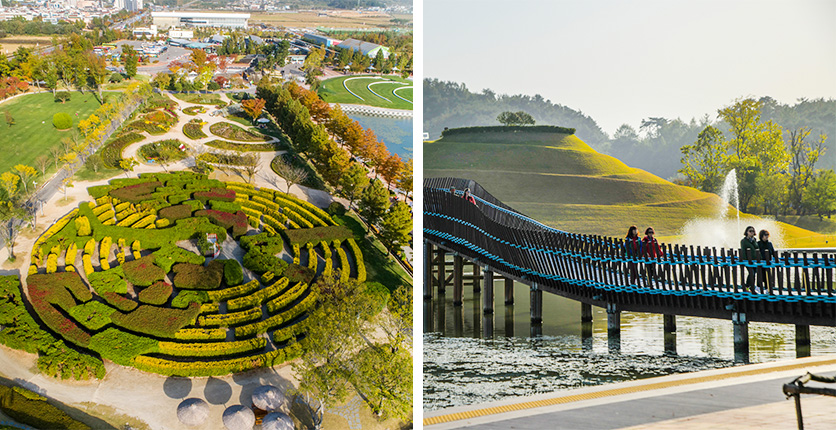
A national garden akin to a world of flowers
The Suncheonman Bay National Garden on Suncheon Bay is Korea’s very first designated national garden. It has an area of over 920,000 sq m, and was built to protect Suncheon Bay. It is estimated that more than 500 kinds of trees and 800,000 fresh flowers are planted here. The Garden comprises unique gardens from 11 different countries such as the Netherlands, Italy, Germany, the United States, China, France and Japan, letting visitors enjoy beautiful flowers from various corners of the world, all in one place.
Suncheonman Bay National Garden, 47, Gukgajeongwon1ho-gil, Suncheon-si, Jeollanam-do

Birds living among a sea of tall reeds
After seeing the Garden, visitors can take the driverless Sky Cube monorail (a 12-minute ride plus a 10-minute walk) to the Suncheonman Bay Wetland Reserve located in the same area. The reserve is one of the world’s top five coastal wetlands that has gradually formed into a massive stretch of reed fields and tidal flats. Among the world’s wetland regions, it is said to be home to the largest number of rare bird species, with close to 140 species of birds including the sandpiper, common mallard, black-tailed duck and wild goose.
Suncheonman Bay Wetland Reserve, 513-25, Suncheonman-gil, Suncheon-si, Jeollanam-do
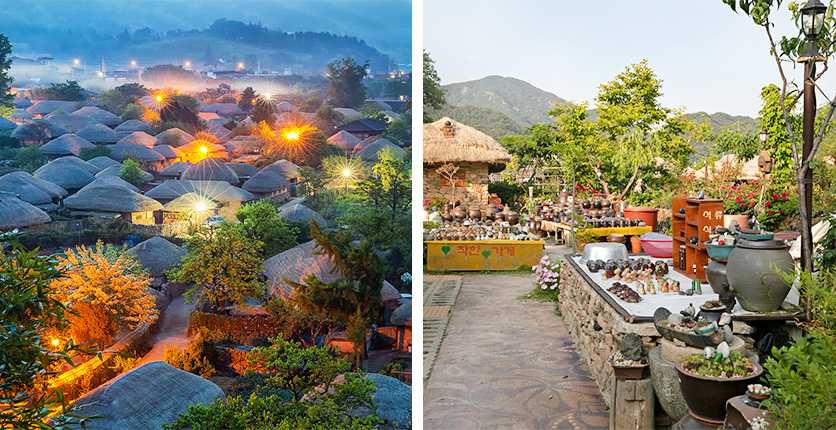
A century-old city preserved to perfection
Many traditional folk villages in Korea have been preserved in their original state, for example, the Naganeupseong Folk Village in Jeollanam-do’s Suncheon City that was built in 1397. It still retains its appearance from 500 years ago during the Joseon Dynasty. Even though it suffered from the brutality of wars, the 1,410m-long city wall and the many sights within the walls have all been immaculately preserved in tip-top condition. At present, the village still houses 98 families with 228 residents, as if time has stood still. Visitors strolling the streets here would see thatched houses surrounded by stone walls and wooden gates, evoking feelings of nostalgia, peace and joy in their hearts.
Naganeupseong Folk Village, 401 Dongnae-ri, Nagan-myeon, Suncheon-si, Jeollanam-do
When planning any trip, don’t forget the all-important travel insurance. SAFRA members enjoy 20% off all Single Trip Plans that include 24/7 in-house Global Assistance; more info at www.safra.sg/travelinsurance
Stay tuned to find out how you can sign up for a special tour to Jeollanam-do by UWeekly, featuring an exclusive itinerary – more details to be released soon.
Want more travel articles like this, and other lifestyle content right in your inbox? Download the new SAFRA mobile app and opt in for the eNSman Newsletter – you don’t need to be a SAFRA member to subscribe – and never miss another story!
Photos: SPH Media Trust/Korea Tourism Organization
